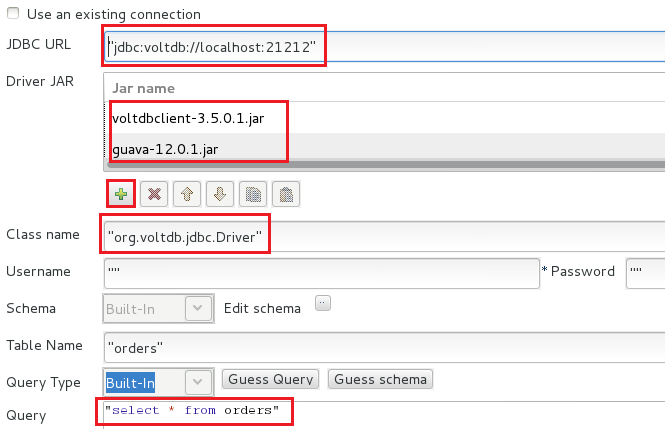By using our site, you acknowledge that you have read and understand our Cookie Policy , Privacy Policy , and our Terms of Service. Use multi-partition procedures when you wish to retrieve or interact with data that is spread across more than one, potentially all, partitions. If, after the connection is made, the connection to one or more of the servers is lost due to a network issue or server failure, the VoltDB JDBC client does not automatically reconnect the broken connection by default. This is how your application achieves maximum scalability - by spreading work concurrently across all available partitions in the cluster. The power of our native client drivers make building distributed, high-performance, and fault tolerant applications much simpler. 
| Uploader: | Mugore |
| Date Added: | 10 August 2017 |
| File Size: | 49.30 Mb |
| Operating Systems: | Windows NT/2000/XP/2003/2003/7/8/10 MacOS 10/X |
| Downloads: | 30107 |
| Price: | Free* [*Free Regsitration Required] |
Drivrr up or log in Sign up using Google. The VoltDB JDBC driver supports ad hoc queries, prepared statements, calling stored procedures, and methods for examining the metadata that describes the database schema.
To connect to multiple nodes in the cluster, use a comma separated list of server names and port numbers after the "jdbc: You can also integrate this data into third-party monitoring solutions so they become part of your overall enterprise monitoring architecture.
Sign up using Email and Password. Want to get events or data into or out of it? If security is enabled for the database, you must also provide a username and password. Is the feature to create table using jdbc out now.
VoltDB Connection Help
If possible, as is the case with the query above, VoltDB executes it as such. Join the DZone community and get the full member experience. This procedure periodically gathers voting results by retrieving data from all partitions - while a higher rate of Vote transactions are occurring in parallel in each individual partition discussed in the next section.
There are two occasions where VoltDB will automatically generate stored procedures. Unicorn Meta Zoo 9: For example, including this construct in your project.
The fastest way to create your stored procedures is to take the SQL and the program logic that comprises the high velocity portion of your application, and put this logic into a VoltDB Java stored procedure.
VoltDB Database Connection Help for Windows, macOS / Mac OS X, Linux
Helpful stats are built-in This includes throughput stats, failure percentages, and a histogram of latency measurements. With VoltDB you can: Got a data pipeline? To identify your procedure as single partition, add the following Java annotation at the beginning of your stored procedure:. See the JDBC documentation at http: Cluster-aware and failure-aware Connect to an entire cluster and then route operations to nodes in ways that minimize extra network hops and balance load.
Programming VoltDB – Easy, Flexible and Ultra-Fast!
VoltDB clients can detect node failure and re-route work to surviving nodes, even reconnecting to any nodes that return. To load the driver you use the Class.
Count Count 2 2 gold badges 12 12 silver badges 34 34 bronze badges. Over a million developers have joined DZone. Note that the SQL goltdb be parameterized, as shown above, and you can also easily identify the stored procedure as single partition or multi-partition.
Please point me to the right doc for it. More details on single-statement stored procedures can be found here.
Maven Repository: » voltdbclient »
We have a beta available, contact me for more details or access. This architecture is important to understand because it directly mdbc how you choose to build your VoltDB client applications as the rest of this blog post will discuss.
Jdbv expressed by DZone contributors are their own. You also want to make sure your stored procedure is passing in the key on which you partitioned the data.
Importers and Exporters are built-in to VoltDB, starting and stopping along with the database.
This blog will discuss several approaches to interacting with VoltDB programmatically and cover the performance, in terms of transaction throughput, that you should expect with each approach. This achieves greater throughput than those drivrr that need to be executed across all partitions called multi-partition queries, explained later in this post.

No comments:
Post a Comment